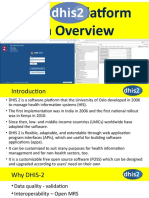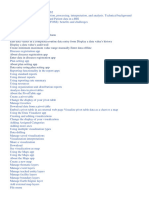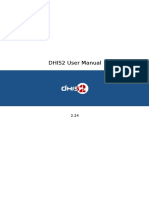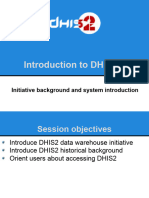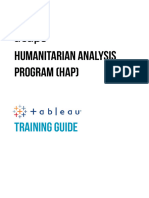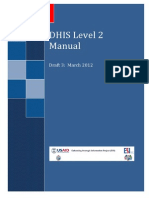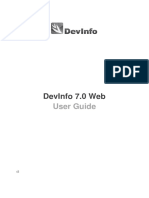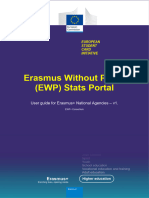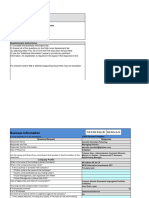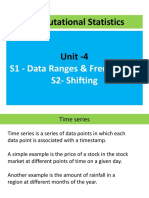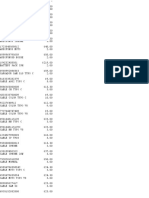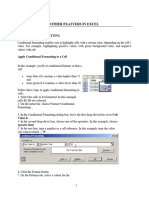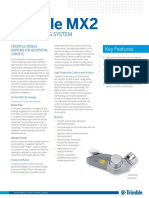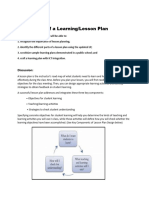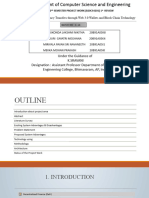DHIS2 API tips for non-programmers
More information is available from:
https://docs.dhis2.org/2.22/en/developer/html/ch01.html
Getting Started
1. All URLs to the API start with:
• https://togo.dhis2.org/dhis/api/
substitute your country
2. To see all resources (categories of data) in the system:
• https://togo.dhis2.org/dhis/api/resources
3. Change the URL to select a list of desired resources:
• https://togo.dhis2.org/dhis/api/indicators
• https://togo.dhis2.org/dhis/api/dataElements (the data that goes into calculating
indicators)
• https://togo.dhis2.org/dhis/api/dataElementGroups
• https://togo.dhis2.org/dhis/api/organisationUnits - (clinics, prefectures, regions)
• https://togo.dhis2.org/dhis/api/organisationUnitGroups
4. Add ?paging=false to the end of a URL to see a full list of a specified resource (by default,
the system only shows the first 25 records). This is useful when you want to download
data.
• Ex: https://togo.dhis2.org/dhis/api/indicators?paging=false
5. Add .csv to download data directly to your computer. The .csv goes before the
?paging=false
• Ex: https://togo.dhis2.org/dhis/api/indicators.csv?paging=false
1
�6. Add a backslash and the ID of a resource to get more detailed information, including
calculation methodologies, on a specific resource. For example, to get a detailed
description of indicator ID h2WK7dkENdu:
• https://togo.dhis2.org/dhis/api/indicators/h2WK7dkENdu
Organisation Units
Organisation Units represent the Country, Region, District and clinic and are organised by
level - Country (1), Region (2), District (3), clinic (4).
1. To see a list of all organisation units:
• https://togo.dhis2.org/dhis/api/organisationUnits?paging=false
2. To filter organisation units by level 4. Add the filter after the question mark.
• https://togo.dhis2.org/dhis/api/organisationUnits?filter=level:eq:4&paging=false
3. You can also specify which fields are returned in a query. For example, if you want the id,
level, name, path and coordinates, one would include:
• https://togo.dhis2.org/dhis/api/organisationUnits?filter=level:eq:4&paging=false&fie
lds=id,level,name,path,coordinates
4. The path is the hierarchy of the Organization Unit - e.g. country ID/Region ID/District ID.
You can also return the name and ID of the Organization Unit's parent (e.g. District) and
the grandparent (e.g. Region). This can be really helpful if you want to create a table of
all level four Organization Units, their District and Region.
• https://togo.dhis2.org/dhis/api/organisationUnits?filter=level:eq:4&paging=false&fie
lds=id,level,name,path,coordinates[id,name,parent]
5. Add the .csv to download a table
• https://togo.dhis2.org/dhis/api/organisationUnits.csv?filter=level:eq:4&paging=false
&fields=id,level,name,path,coordinates[id,name,parent]
6. Or add .json to return a string with all of the information well organized (useful for our
Alteryx API)
• https://togo.dhis2.org/dhis/api/organisationUnits.json?filter=level:eq:4&paging=fals
e&fields=id,level,name,path,coordinates[id,name,parent]
7. In addition, Organization Units are also part of Organization Unit Groups. These specify
the type of clinic (e.g. public or private, hospital or USP, etc).
2
� • https://togo.dhis2.org/dhis/api/organisationUnitGroups
Querying Specific Data Points
1. In addition to the meta-data, you can also query specific data points.
a. First, update the URL to your country’s API endpoint. In Togo, this required
adding /api/29/analytics. Then add dimension= to specify specific dimensions
that you want (ou: organization unit IDs, dx: indicator IDs, pe: time period).
b. Use % between IDs to use more than one dimension
c. In the example below:
i. Organization Unit IDs are highlighted in purple
ii. The time period is highlighted in green
iii. The indicator IDs are highlighted in yellow
https://togo.dhis2.org/dhis/api/29/analytics.csv?dimension=ou:PgoyKuRs20z%3BObvNuNoK
i46%3BKoA5gCxrxkr%3BgYM7EHlcVxv%3Bris2jRhudfy%3BHROrwGFFFR6%3BS99zHZFkiKU%3
BPLqoLdWlKg9%3BPJUDnUoUOXC%3Bw6YTNjy898U%3BQRtRvWW1VBL%3BUbc4fWZAAz9
%3BkCD9l4Qx2WP%3BeEQIxvIsWib%3BoQandBcJt22%3Btltz80zDS85%3BRDuBzY0i1As%3BB
Y9niUgBS0k%3BPYeCQPNnSAn%3BeJtIZ3ZMkfH%3BWI3DehMC7KX%3Bk52TtOanhCc%3BSdr
xZwN9YeK%3BcoB3NqYIMOW&dimension=pe:LAST_12_MONTHS&dimension=dx:URnDxZ1b
voK%3BwJwFD420Gn1%3BdU9I7ssqQuA&displayProperty=SHORTNAME
Indicator Dictionary Module
1. The Indicator Dictionary module allows you to search indicators by name. Each indicator
has basic details, including definition, calculation, category, and date of creation.
Additionally, you can use the Data Analysis and Trend Analysis tabs for a quick look at the
data over time.
• https://togo.dhis2.org/dhis/api/apps/Indicator-Dictionary/index.html
A lot more documentation on the web API can be found online at
https://docs.dhis2.org/master/en/developer/html/webapi.html.
We also used the application PostMan to construct API requests
https://www.getpostman.com/
